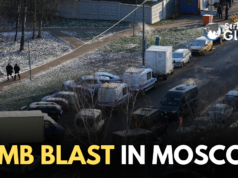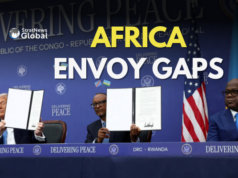What exactly are critical minerals? Why are they important, particularly for the transition to clean energy and India’s pledge to achieve net zero emissions by 2070.? What steps can India take to ensure a regular supply chain of minerals that we do not have, and procure, secure and process those that we do? Those were some of the questions we put to two eminent experts in this field from the Centre For Social And Economic Progress. (CSEP), one of India’s top thinktanks, devoted to “in-depth, policy relevant research and provides evidence-based recommendations to the challenges facing India and the world.”
Dr Rajesh Chadha is a Senior Fellow at CSEP, who has worked extensively on the issues of international trade, FDI, and non-fuel minerals and mining in India and held very senior advisory and academic positions. And Ganesh Sivamani is an Associate Fellow in the Natural Resources vertical of CSEP, who’s working with Professor Rajesh Chadha on the Non-Fuel Minerals and Mining in India research project.
And they have written several working papers and other documents on the subject, the latest one with a rather wordy title: ‘Projecting Critical Minerals Need for India’s Energy Transition: How Much of Which Minerals are Needed for the Transition?’
Non-fossil-fuel minerals did not get much attention earlier, notes Dr Chadha, not just in India, across the world. But now that it has, there are diverse factors at play which need to be studied and factored into our policy-making. To start with, exploration has to be ramped up to identify areas where these minerals are available. Then comes processing. For instance, “suppose we get a mineral like lithium, from Jammu and Kashmir, in say six years or so. What do we with it? If we don’t know how to process it, we may have to export it for others to process for us. This is quite a complex process for various other minerals also,” he says.
And then there’s supply chains, or the acquisition of mining rights and processing for minerals that we do not have, from other parts of the world.
“It’s a very complex subject, starting from reconnaissance, to exploration, to actual mining, to processing, and then finally entering into the regional and global value chains,” he explains. Then, mineral security has to be ensured at various levels through ties up with relevant groupings, like the US led Minerals Security Partnership and the “one we have been talking about between the QUAD-ASEAN region, he says. . Then there’s China, which dominates critical minerals extraction and processing worldwide, sometimes to the extent of almost 90 per cent in the case of certain minerals.
Ganesh Sivamani, whose other areas of interest include sustainability and the environment, elaborates on the attempts being made across various levels to balance environmental concern with the need to mine these critical minerals, and the multiple social, legal and environmental challenges involved. This includes understanding the concerns of various stakeholders, including the regional population which is most likely to be affected by such mining, and then addressing them in a holistic manner through thoughtful policy making and other measures.
To find out more about the critical minerals ecosystem, and the steps that India is taking to procure and protect these critical assets, watch the whole interview.
In a career spanning three decades and counting, Ramananda (Ram to his friends) has been the foreign editor of The Telegraph, Outlook Magazine and the New Indian Express. He helped set up rediff.com’s editorial operations in San Jose and New York, helmed sify.com, and was the founder editor of India.com.
His work has featured in national and international publications like the Al Jazeera Centre for Studies, Global Times and Ashahi Shimbun. But his one constant over all these years, he says, has been the attempt to understand rising India’s place in the world.
He can rustle up a mean salad, his oil-less pepper chicken is to die for, and all it takes is some beer and rhythm and blues to rock his soul.
Talk to him about foreign and strategic affairs, media, South Asia, China, and of course India.




